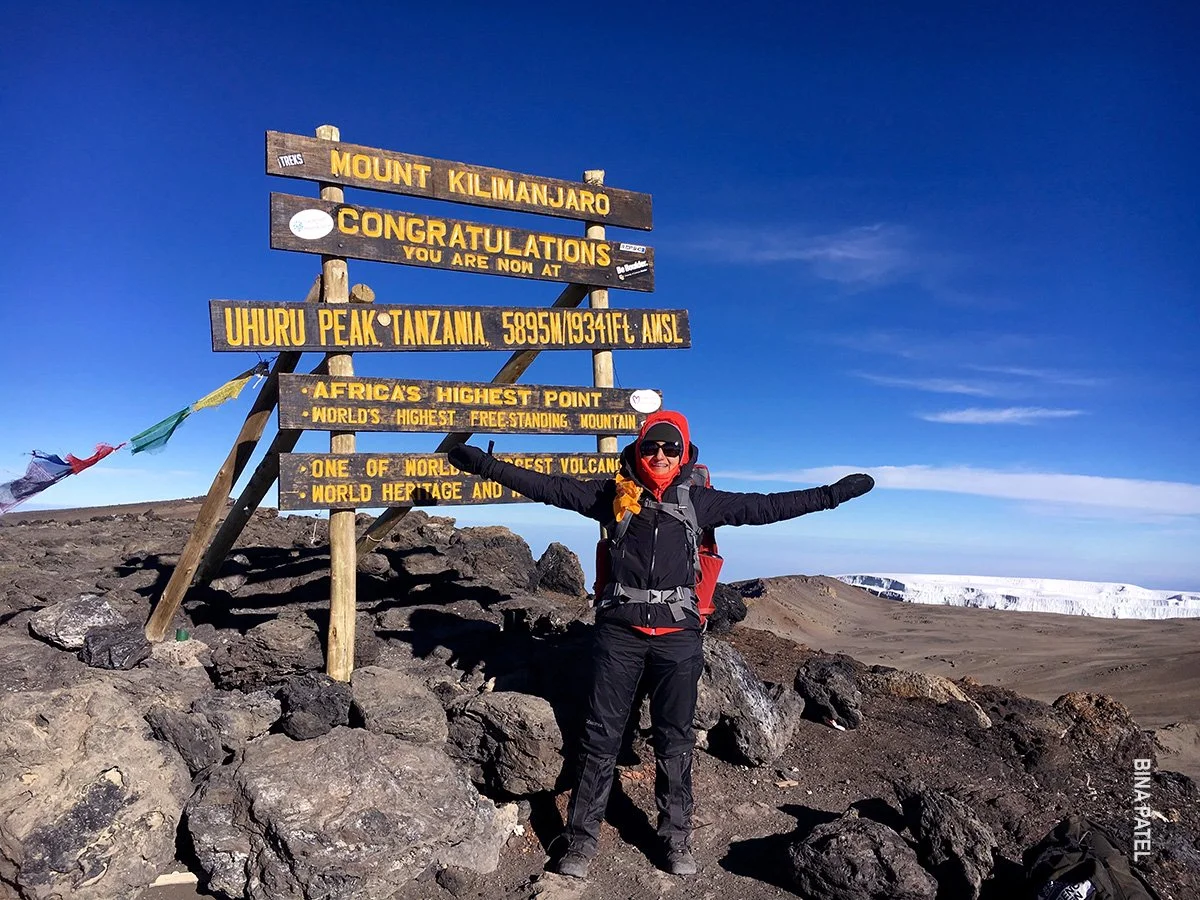ON THE MOUNTAIN
Exclusive Tricks of the Trade
The following are exclusive tips from Thomson staff. Found nowhere else, these “tricks of the trade” are based on forty years of high-altitude experience and thousands of Kilimanjaro summits.
FOOD, WATER, & HYGIENE
For variety, consider bringing powdered drink mix with electrolytes to stay hydrated, or bouillon cubes or soup mix for a savory fix. (We’ll provide hot water, tea, and coffee at mealtimes.)
In freezing temperatures, turn your tightly sealed water bottle upside down. As the water freezes, you will still be able to drink from the bottle.
Keep a snack by your sleeping bag at night; if you’re feeling cold, eating a little chocolate or some nuts will help warm you up.
Be sure that your toe nails are cut closely. When you descend the mountain, you’ll be very glad you did!
If you need to go to the bathroom at night, don’t resist! Holding it will not only distract you from getting back to sleep, it will make you feel colder, as your body works hard to keep your bladder warm. Get up, relieve yourself, and enjoy a quiet moment alone under the blanket of stars.
THE TREK
It takes time to get used to breathing efficiently at altitude. Remember to use controlled, steady breaths, and breathe through your nose for as long as possible during the trek.
Measuring out even steps or using the steady beat of your trekking poles can help to create a comfortable rhythm to your breathing.
Pressure breathing is a mountaineering technique that can be used at higher elevations to maximize the efficiency of your oxygen intake. It entails breathing in deeply through the nose and exhaling forcefully through the mouth. When done properly, you’ll make a “whoosh” noise as you exhale. Just remember NOT to practice this at sea-level as it could cause you to hyperventilate.
The rest step is an extremely important mountaineering technique for conserving energy. It entails straightening your knee with each step in order to place the burden of your weight not on the muscles, but on the skeletal structure. This should be executed in a smooth, slightly robotic motion that you can practice on any incline or on stairs. If done properly, it will spare your muscles an extraordinary amount of energy, even though each rest only takes a second.
Always speak up! Don’t be shy about asking your guide for assistance, he is there to help. Whether you don’t feel well, you lost something, something is broken, or you just have a question, talk to your guide. Chances are he will have the tools in his arsenal to fix whatever’s bothering you.
CLOTHING & GEAR
Change into the next day’s fresh clothes as soon as you get into camp and sleep in them. You can even store boots in your sleeping bag overnight to keep them warm. Mornings can be very chilly, this makes an early morning start much more pleasant and efficient.
Bring a small pillowcase and stuff it with clothing, such as a fleece.
Duct tape is every hiker’s best friend for quick fixes that range from blister care, to mending small rips, to fixing gear. It’s not feasible to bring a heavy roll, so wrap a few strips of duct tape around your water bottle.
Safety pins are great for small fixes, like sunglasses or clothing, but they’re also great for hanging up laundry if you take advantage of a sunny day to hand-wash small items.
Your body will cool down very quickly when at rest, so don’t hesitate to throw on an additional layer of clothing for warmth during short hiking breaks.When you arrive at camp, change into dry layers and your down puffy jacket!
Wear your hiking boots on the plane! You will not be able to hike without them, and this will also save space in your bags.
Use your Nalgene bottle as a hot water bottle at night. Simply request hot water after dinner and place the tightly sealed bottle near your femeral artery (lower thighs) to warm the blood as you drift to sleep. (Never place it directly against bare skin!)
Pack small items inside your empty water bottles during international travel to save space and better organize your bags.
Bring a watch with an alarm and a lighted face to tell time at night in your tent.
Cold weather diminishes battery life. Keep your camera and batteries in your pockets during the day and in your sleeping bag overnight to extend energy life.
Layering is key to your comfort. Do not skimp on the packing list. Any time of year will likely have some cold and wet weather, and you will need to be prepared.

